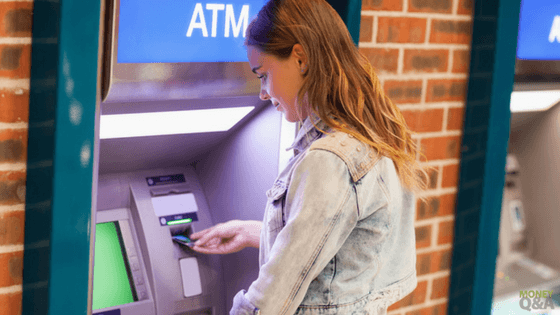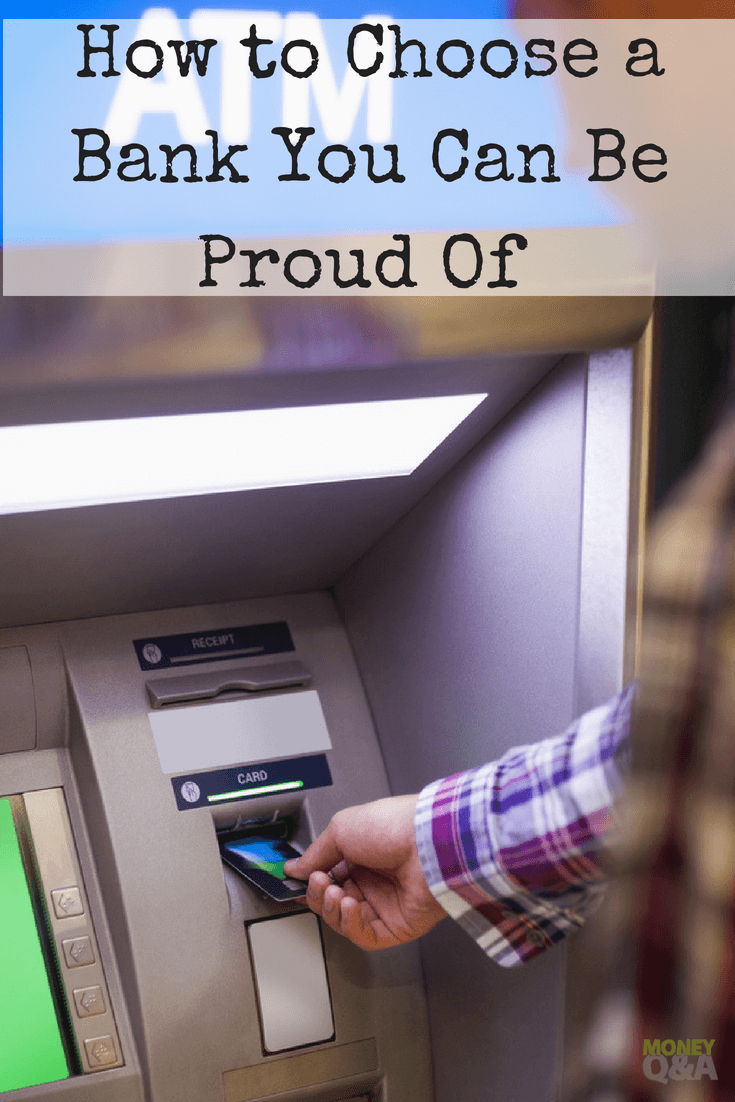 Are you tired of your bank taking advantage of you? Do you know how to choose a bank you can actually be proud of for a change? You should use a bank that treats you like a valued customer. Here’s what you need to know to find a bank worthy of your business.
Are you tired of your bank taking advantage of you? Do you know how to choose a bank you can actually be proud of for a change? You should use a bank that treats you like a valued customer. Here’s what you need to know to find a bank worthy of your business.
Are you falling out of love with your current bank, or were you never particularly fond of your current bank in the first place? Whether you’re sick of hidden fees, bad customer service, or you simply think there are better opportunities elsewhere, there’s nothing wrong with wanting to switch to another bank. Instead of letting emotions get in the way of choosing the best bank for your situation, here are 9 rational considerations to make before making the move:
How to Choose a Bank You Can Be Proud Of
Customer-First Approach
Can you imagine a well-known bank opening unauthorized accounts without customers knowing about the account’s existence? If you find this difficult to believe, just look at what Wells Fargo did recently: opened 3.5 million fraudulent accounts between 2009 and 2016, which has led to a $142 million legal payout to customers who were negatively impacted by fraudulent fees and dinged credit scores.
This is an excellent example of what you don’t want from a bank. Instead, find a bank that truly values you as a customer by providing the highest level of service (no fraud, thank you), expedited responses to your questions, convenient contact options, and a genuine dedication to customers’ financial well-being.
Favorable Interest Rates
Many traditional banks offer just 0.01-0.05% interest on savings account deposits, but other banks (such as web-based banking institutions) offer much better interest rates on their savings accounts (ranging from 0.50% to 1.00% in some cases).
On the flip side, you’ll want to get a good interest rate on your bank’s credit card, too. Some banks may offer 0% introductory APR for 12-18 months, while others may start you off with a 26% or higher APR, so beware the banks that offer minimal interest on savings and high interest rates on their own credit cards.
No Hidden Fees
There’s nothing more annoying than hidden bank fees. Oftentimes, these fees are so small that you don’t notice them hit your account unless you carefully go over every transaction posted to your account (which most of us don’t have time for). You may not realize you’re paying $3-10 per month until a year later, and a bank that happily sneaks in hidden fees for its own customers likely won’t be willing to hear out your complaints about the dense fine print that buried the hidden fees in your contract to begin with.
To avoid this, make sure you find a bank that is extremely clear about its fee structure and demonstrates a willingness to refund fees wrongfully charged to your account.
No Monthly Account Fees
Many banks require that you have at least $1,000 or even $5,000 in your account to avoid a monthly “maintenance” fee. This is ironic, considering banks make 4-5% on every $1 deposited by their customers by lending out that money to other customers – so why aren’t they thanking you for helping them increase their profits, instead of charging you for a place to safeguard your cash?
Monthly account fees, whether they exist for everyone or only for customers who don’t meet the minimum balance requirements, are ridiculous. Avoid a bank that charges monthly account fees just to hold your money for you.
MyBankTracker conducted a survey about checking account usage in 2017 with 21,000+ surveyed. And, the findings were less than stellar. Here are the top findings:
- Americans wasted nearly $3.5 billion in monthly maintenance fees last year at the top 5 US banks alone. That’s at least $289 million every month at the top 5 US banks.
- 70.6 million US households, nearly 64%, had less than $1,000 in checking accounts – leading to monthly fees if they don’t use direct deposit.
- 67.7 million US households, 61%, don’t use direct deposit, an easy way to avoid monthly fees
- 41 million US households, 37%, had at least 1 overdraft
- 7.7 million US households, 75, had over 5 overdrafts
No Transaction Limitations
Did you know that the Federal Reserve’s Regulation D limits withdrawals and other outgoing transactions to just 6 per month? Fortunately, this typically applies to savings accounts, so if you find a bank that allows you to easily set up direct deposit into a checking account, then you’ll be allowed unlimited transactions to and from this account.
Overdraft Protections
The overdraft protection feature is designed to prevent customers from incurring hefty charges for writing checks or initiating debit transactions without sufficient funds in their checking accounts. Many banks offer overdraft protection, but they’re not created equally.
Some banks charge massive overdraft fees for repeat offenses (as much as $35+ in some cases), while others may charge you if you don’t have a savings account synced with your checking account (or there are also insufficient funds in your savings account). Seek out a bank with no overdraft fees and generous conditions for instances when you might accidentally go over your account balance.
Large ATM Network and Reasonable ATM Fees
Many customers are drawn to big, nationwide banks because they assume these banks have the most accessible ATMs. However, this misconception ignores the network of ATMs provided by smaller or online-based banks, in which you can use one of the thousands of ATMs across the country and receive a full reimbursement for any withdrawal or ATM fees incurred.
Some banks go the extra mile by offering ATM fee reimbursements on cash withdrawals you make overseas. So, don’t limit yourself to a major bank on the false assumption that they’re the easiest to access wherever you go.
Functional Smartphone Apps
Almost all banks and credit unions have their own smartphone apps nowadays, but the number of features and quality of the apps vary widely. You don’t want to deal with an app that constantly crashes and experiences bugs with every update, just as you don’t want a virtually useless app that only lets you view your balances and that’s about it.
To find the best bank, be sure their app has good reviews for your smartphone platform (some apps are great for Apple devices and terrible for Androids, and vice versa). Also, don’t forget about electronic check deposits, which are super convenient for anyone on the go!
Multiple Account Incentives
When it comes to finding a good bank, the most customer-friendly banks offer juicy incentives for opening multiple accounts with them. This may include: lower APRs on bank-backed loans for existing checking/savings account holders, lower account fees for customers with more than one account, referral programs for customers who encourage family members and friends to open accounts, and more.
Final Thoughts on Choosing the Best Bank
Finding a good bank is one of the most important aspects of improving your money management skills. If you choose the first bank that appears in a Google search or stick with your old bank just because you think switching would be too much of a hassle, then you could be missing out on quite a few benefits, such as lower (or nonexistent) fees, better customer service, and increased access to ATM networks.
Don’t let fears of shifting all your finances to a new banking institution prevent you from doing business with the best bank you can possibly find. Instead, consider the factors listed above and decide which bank would be right for you after some careful research and comparison shopping.

